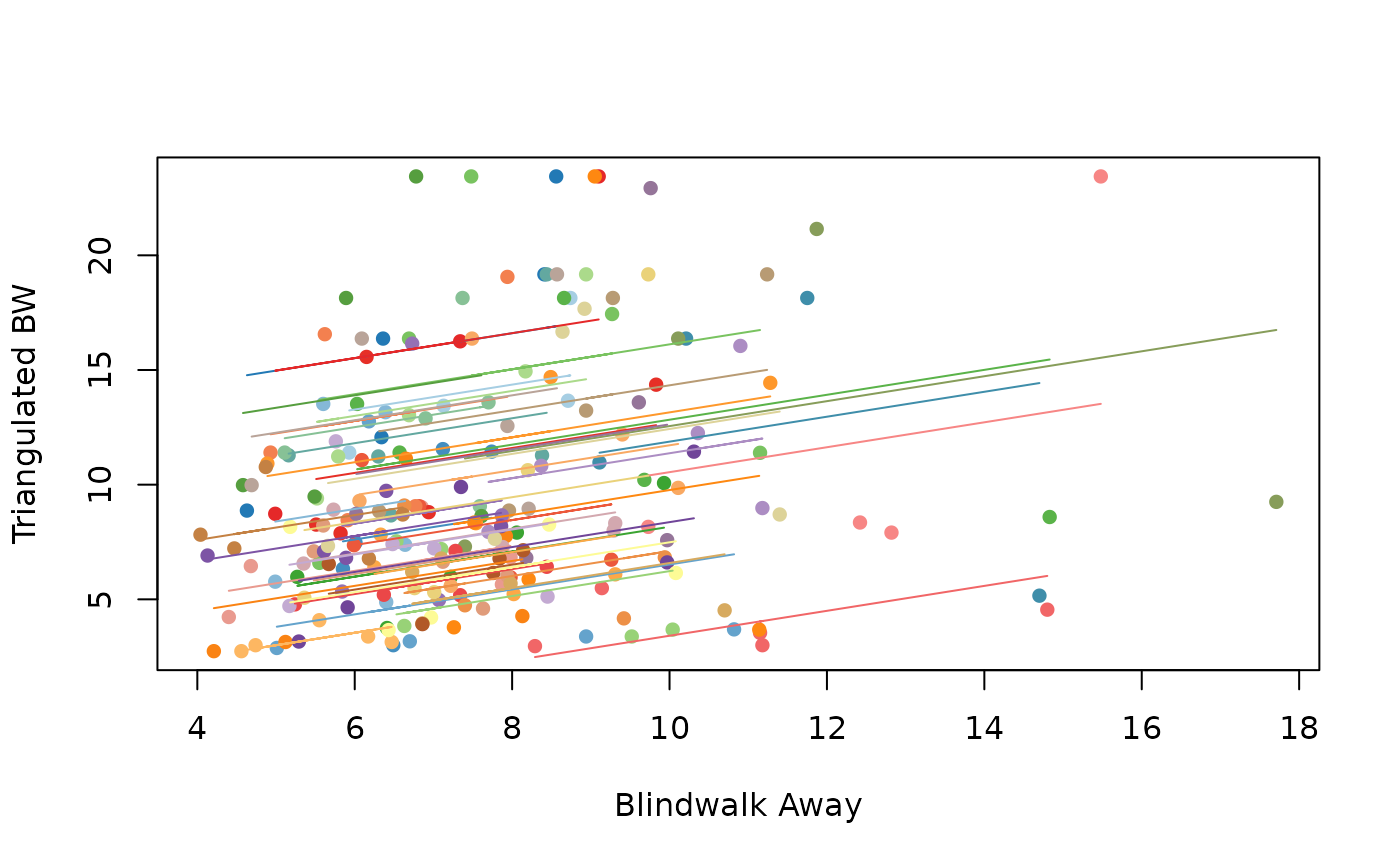Create a repeated measures correlation matrix.
Value
A list with class "rmcmat" containing the following components.
- matrix
the repeated measures correlation matrix
- summary
a dataframe showing rmcorr stats for each pair of variables
- models
a list of the full rmcorr model for each pair of variables
References
Bakdash, J.Z., & Marusich, L.R. (2017). Repeated Measures Correlation. Frontiers in Psychology, 8, 456. doi:10.3389/fpsyg.2017.00456 .
Bland, J.M., & Altman, D.G. (1995). Calculating correlation coefficients with repeated observations: Part 1 – correlation within subjects. BMJ, 310, 446, doi:10.1136/bmj.310.6977.446 .
Cohen, P., West, S. G., & Aiken, L. S. (2002). Applied multiple regression/correlation analysis for the behavioral sciences (3rd edition), Routledge. ISBN: 9780805822236.

